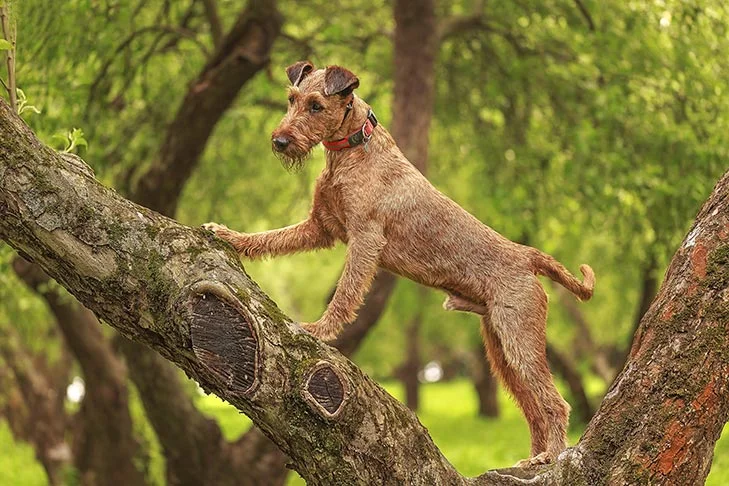The medium-sized Irish Terrier, often known as “Daredevil” of the Emerald Isle, is a daring, dashing, and brave terrier. The Irish Terrier, known for his fiery red color and temperament to match, is stouthearted at work and softhearted at home. The original long-legged terrier is the Irish Terrier. They have a shoulder height of roughly 18 inches and are powerful but graceful. Everybody line is striking, and the composition as a whole is superbly balanced. The breed’s temperament is as fiery as its tight, red coat. A dog lover’s dream, if you don’t melt when you see this Technicolor terrier set against the vibrant greens of the Irish countryside, forget pets and get a goldfish instead.
Irish Terrier
Average sizes and life
expectancy of the breed.
Height
18 inches
Weight
27 pounds (male)
25 pounds (female)
Life Expectancy
13-15 years
Breed Traits & Characteristics
About the Breed

Owning a dog is not just a privilege; it’s a responsibility. They depend on us for, at minimum, food and shelter, and deserve much more. When you take a dog into your life, you need to understand the commitment that dog ownership entails.
 Health
Health
 Grooming
Grooming
 Exercise
Exercise
 Training
Training
 Nutrition
Nutrition
History
The Irish Terrier has been a mainstay of rural Ireland for hundreds of years and is the perfect example of an all-purpose farm dog. Of course, a dog with this much enthusiasm and intelligence can’t be contained by a single job description, even if it is a relentless ratter. As watchdogs, flock and family protectors, and hunting partners on land and in lakes, ITs have earned their food. In the 1870s, the breed’s type as we know it was established.



